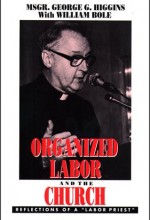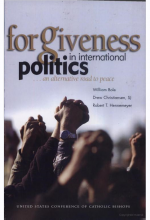One of the many questions being asked about Pope Francis is whether he’ll be able to get a handle on the unruly and unpredictable Roman curia, the central administration of the Catholic Church. In the past year, that governing body has delivered such spectacles as the case of the pope’s butler, the so-called “Vatileaks” affair, and a continuing corruption scandal at the highest levels of the Vatican bank. Infighting and skullduggery have made it clear that Vatican politics, like the secular variety, can be all too human and at times brutish.
Partly with that in mind, a number of Vatican experts are saying that the new successor of St. Peter needs to have the skill set of a CEO, to manage the unmanageable. I don’t know if that’s necessary (or sufficient). Pope John Paul II was not especially noted for his managerial brilliance, but he was able to transcend the bureaucracy and project a global presence that overshadowed it. The curia was generally trying to keep up with him, not the other way around.
But now, many are asking an oddly necessary question about the most famously hierarchical organization on earth: Who’s in charge there? John Thavis, a longtime Rome correspondent, digs deeply into the paradox in his new book, The Vatican Diaries (Viking). My review of the memoir appears in the current edition of America magazine, and here it is, in full:
After turning the last pages of The Vatican Diaries, I noticed an Associated Press item that began, “The Vatican praised President Barack Obama’s proposals for curbing gun violence.” The report was based on a radio commentary by the Vatican press secretary, Frederico Lombardi, S.J., on Jan. 19. Those who read John Thavis’s vivid recollections in The Vatican Diaries will have cause to be at least initially skeptical whenever they hear that “the Vatican” said this or that definitively about anything.
Recently retired as the longtime Rome bureau chief of Catholic News Service, Thavis argues that the popular image of the Vatican as a monolith, eternally on message, is a myth. On the contrary, it “remains predominantly a world of individuals, most of whom have a surprising amount of freedom to operate—and, therefore, to make mistakes,” he writes.
Re-enter Father Lombardi.
The author tells of an incident when Lombardi, during Pope Benedict XVI’s visit to Jerusalem in 2009, lashed out at “lies” circulating about the young Joseph Ratzinger in Nazi Germany. “The pope was never in the Hitler Youth, never, never, never!” the Vatican spokesman declared to an incredulous press. The problem was that Ratzinger’s Hitler Youth involvement was a matter of historical record. As Thavis explains, Lombardi (whom he describes otherwise as “a gentle soul with a sharp mind”) had overheard the papal secretary remark offhandedly at breakfast that Ratzinger was never an “active” Hitler Youth member. By lunch, the misconstrued comment had become the Holy See’s “latest media fiasco.”
Thavis points to the “fragmented chain of command in what is arguably the world’s most hierarchical organization,” and he relishes the irony. For him, the fumbling and fallibility humanize the institution. But not even the bureau chief was charmed by another episode he recounts that revealed both bungling and deception.
Thavis unfolds the story in a riveting chapter titled “Cat and Mouse,” about negotiations between Rome and the ultra-traditional Society of St. Pius X. Some at the Vatican sympathized with the breakaway order and saw no need to inform top officials that one of four traditionalist bishops whose excommunications were being lifted as part of a reconciliation effort, Richard Williamson, was a Holocaust denier. But most of those who could have averted this particular fiasco—the Williamson affair became one of the biggest religion stories of 2009—were not scheming. They were just snoozing. In the end, the pope admitted publicly that anyone with an Internet connection could have known of the bishop’s bizarre anti-Semitism.
In recent years I haven’t followed Catholic News Service closely, so I’m not sure how much of the book would have been politically incorrect and therefore not publishable in that official news outlet. But I’m guessing Thavis did not often portray Benedict unflatteringly alongside his immediate predecessor, as he does in this memoir.
Here is how the author, with help from Bob Dylan, teases out one contrast at the start of his last chapter, “The Real Benedict”:
The first thing I noticed was the twitching leg. It was dark backstage, but I could make out the slight figure standing at the edge of the platform. He wore a black suit with a white stripe running down the side, and his right leg was jerking up and down involuntarily. It had to be Dylan. And he must be nervous, I thought. Singing for the pope was not an everyday thing.
The performance took place at a Eucharistic congress in Bologna in 1997. Pope John Paul II followed with some reflective riffs on “Blowin’ in the Wind,” evoking the Holy Spirit in motion. Meanwhile, back at the Roman Curia, Cardinal Ratzinger was exuding disapproval, openly disparaging Dylan and other pop icons as “false prophets.” As Thavis writes in another chapter, John Paul traveled to remote lands to be with “tribal dancers in feathered headdresses.” Benedict prefers sitting “in a concert hall filled with dignitaries like himself, listening to Mozart.” John Paul projected a spirit of openness to the wide world. Benedict? Not so much.
Thavis also looks probingly at how the AIDS pandemic has provoked genuine debate within the Vatican about the use of condoms to prevent transmission of the disease. That aside, I was surprised to find little in the book that throws light on global justice issues. During Thavis’s 29 years in Rome, Communism imploded in Eastern Europe, Jesuits and others were massacred in El Salvador, and two popes issued encyclical letters refreshing Catholic social teaching—to mention a few developments. But hardly any of that is recalled in these pages.
Then again, income stratification does not make the most scintillating subject matter for a book subtitled A Behind-the-Scenes Look at the Power, Personalities, and Politics at the Heart of the Catholic Church. And I’m glad Thavis has offered this rare, perceptive and highly readable glimpse into a power structure that is less in control than many would have us believe. …read more





